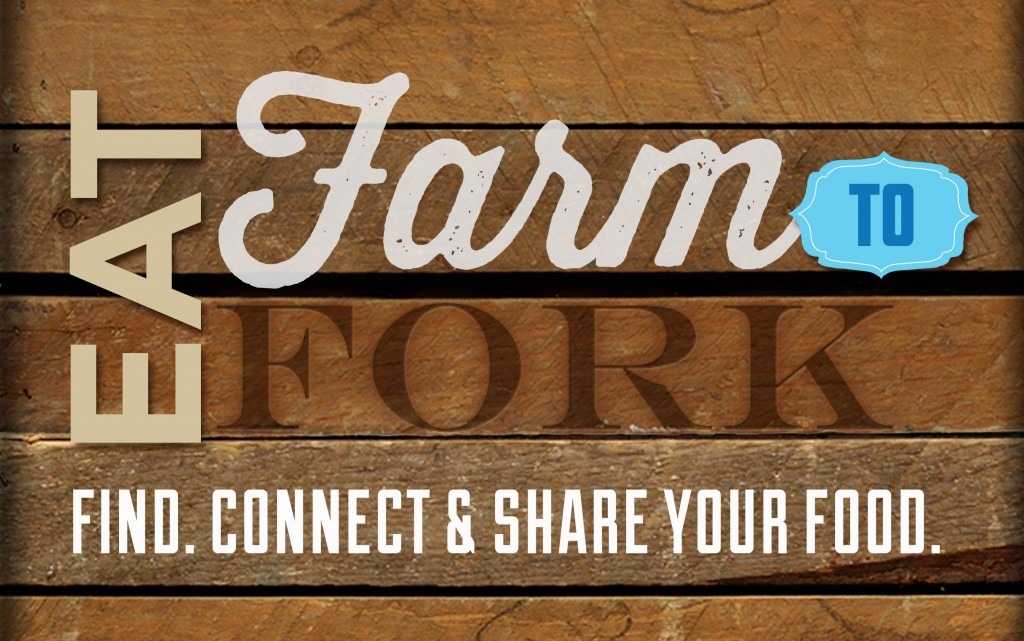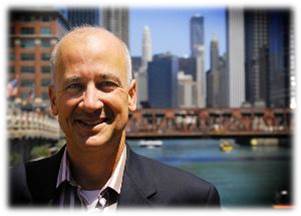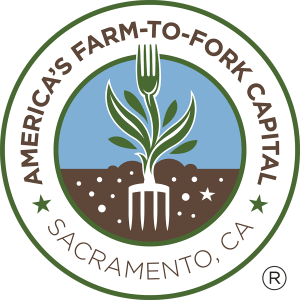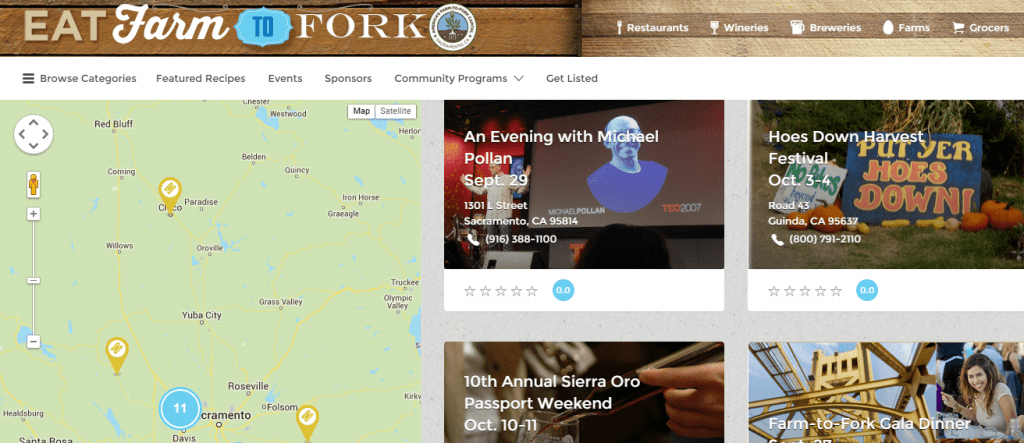Ask people what they know about Sacramento and they will tell you it’s the capital of California. Sports fans might mention the lowly Sacramento Kings, while radio geeks might bring up that Rush Limbaugh got his start in the market.
Outside of the immediate area, few realize just how much food is grown in the valley all around the city or talk about the great restaurants and wineries in the area. The city is essentially Ground Zero for the Farm-to-Fork movement, but most people are simply not aware of this fact. So the Sacramento Convention and Visitor Bureau is out to change awareness levels – with the help of local radio.
Entercom’s Sacramento stations recently launched EatFarmtoFork.com, an ambitious effort designed to “drive awareness and engagement for the Farm-to-Fork Capital of America,” especially among the people who live in the area. The program’s goals are to increase local understanding of this food-esque culture, drive visits to retailers and restaurants, which will result in greater promotion of the concept by local residents. And the hope is that it ultimately leads to an increase in culinary tourism to the area.
The website is designed to tell the story of how food gets from farms to consumers’ plates, as well as how residents can become a part of the culture. It’s also about creating a sense of pride in the food being grown in the area and the great culinary options consumers in Sacramento enjoy as a result.
But the concept of one radio cluster taking the lead to drive perceptions for the entire area is unique – and it’s innovative. If the Entercom Sacramento team is successful, it will benefit all radio stations in the market, as well as other media players.
To understand why a single radio cluster would embark on this initiative, and why it matters, we checked in with Lance Richard, Entercom Sacramento’s VP/Market Manager, as well as the architect of this program.
JM: How did this initiative get started?
LR: I moved here and the narrative I kept hearing was “It’s a great place to live. You’re 90 minutes from San Francisco; you’re 90 minutes from the coast, 90 minutes from Tahoe, 90 minutes from Napa. You’re 90 minutes from anywhere good.” When I asked about Sacramento, the answer was “Well, you know, it’s not that good.”
But I’m digging it. There’s a great outdoors vibe, the weather is actually really good, and the restaurants are great. There’s this really cool “Farm to Fork” thing because you’re in this valley where something like 60% of all produce is grown, so the food’s incredibly fresh. Plus, the wine is phenomenal. Not just the Napa wine, which is always good, but there are wineries literally 15 minutes from downtown and another group in the Sierra Foothills.
So I met Mike Testa, the Chief Operating Officer from the Convention and Visitors Bureau (CVB) and I told him the story about this negative narrative, and he says, “Yeah, I’m trying to change that, too” so we started talking.
JM: So how does this change the narrative about the city, especially from a tourism standpoint, considering this is a local initiative?
 LR: Mike is trying to follow the Austin, Texas, model. If you ask anybody in Texas what the coolest place in the state is, they’ll say Austin. That started because locals believed that and they kept telling the story, so even more people started believing it. But it didn’t happen overnight.
LR: Mike is trying to follow the Austin, Texas, model. If you ask anybody in Texas what the coolest place in the state is, they’ll say Austin. That started because locals believed that and they kept telling the story, so even more people started believing it. But it didn’t happen overnight.
But instead of Sixth Street, music, and South By Southwest , our core asset revolves around food and drink: everything from great wine and beer to excellent food, sustainable farming, urban farming and all that kind of stuff.
To really tell the Sacramento story, Mike can keep flying in food bloggers and opinion makers, but it will never really take off until the locals believe it and that’s where we come in. We have six radio stations that reach 60 percent of the market on a weekly basis. We can help him tell that story.
JM: Beyond the website, what is the cluster’s commitment?
LR: Instead of giving our support to a whole bunch of different lame events, we’ve committed to three years of essentially using our unsold sales and promotional inventory to focus on this one initiative.
JM: That’s a big commitment. What’s your incentive?
LR: We were real clear with the CVB that we love Sacramento but we’ve also got to make a profit. So we’re taking an approach similar to the public radio model where we’re finding underwriters. So in all of this media, we integrate a grocery store chain, a restaurant, a winery, a brew master, a food distributor, or whatever else fits into the storyline about how Sacramento is the place for food from producer to your plate.
This gives us the ability to have conversations with people we’ve never talked with before at high levels in categories of business that would’ve never considered radio. So if we can generate half a million dollars in revenue the first year, and $750,000 in the second, it’s well worth it.
Plus, it gives us credibility against CBS and iHeartMedia because as a lot of media has pulled back from being involved in the community, we’re taking the opposite tactic and going all-in on local. And to do that, we’ve got to be embedded with the movers and shakers of the city: the political leaders and the market leaders. This allows us to do that.
JM: Are there other components to the program beyond the website and on-air messaging?
LR: Events play a large role. For example, there’s a big experiential event the CVB puts on during a week called The Bridge Dinner. There’s an iconic bridge that crosses the river from Sacramento to West Sacramento. It’s a beautiful bridge, a symbol of the city. They block the bridge off and bring in the best restaurants and wine for this one evening.
Everybody who is anybody is there but it’s exclusive. There are about 400 tickets that sell out in seconds at $350 apiece. Now we’ve got the option to do events like that. We’re working on a dinner at the airport in a Southwest hangar with the tables underneath a jet. How cool would that be if you experienced that with great food and wine? It’s just different and that’s what we want to do. And we want Southwest to underwrite it. So we’re talking to the guy at the airport who’s got the relationship with Southwest.
JM: So you’re creating events that are less about selling 10,000 tickets and more about 1,000 higher priced tickets?
 LR: Exactly. And the key for the sponsorship part is about getting Rabobank to underwrite this super-hot event. In return, we give them 100 tickets for their best clients. They get the best seats in the house and a special tour of the jet and all kinds of other special stuff. They have something special and we have a deeper relationship.
LR: Exactly. And the key for the sponsorship part is about getting Rabobank to underwrite this super-hot event. In return, we give them 100 tickets for their best clients. They get the best seats in the house and a special tour of the jet and all kinds of other special stuff. They have something special and we have a deeper relationship.
But we will also have bigger events. It could be a small plates festival or high end wine and hors d’oeuvres for the masses. So we’ll have some mass appeal events but we’ll also have some that will be more exclusive.
JM: What was the biggest hurdle you had to overcome in getting this started?
LR: Selling it. When we made the presentation to the CVB’s committee they were pinching themselves – “Like really? You guys are going to do this?” They were excited because these government organizations don’t have a ton of marketing resources. So selling it to them was easy.
It’s selling a sponsor that has been the challenge. We couldn’t launch until we had our first sponsor and it needed to be a legitimate name. The key was Raley’s, which is the dominant grocery chain in town. It’s a local chain that has been here forever. We targeted them as the key sponsor and it took us a good three months from the time that we pitched them to get the close.
Now other farm and fork-related clients are falling in because they know we are legit. But it’s still challenging to make the case to non-related advertisers. We’re talking to a bank that does a lot of lending to farmers but also to a credit union that doesn’t. So there’re two different business models and we have to make them both work.
It’s really about understanding the client’s needs because if we are going to talk with Lexus, it’s not going to be about how many cars they could sell to farmers. Instead, it’s about being aligned with a popular trend because right now it’s very cool to be associated with anything organic. So we have to make the case that if you’re part of this community, you need to be part of this conversation, and by the way, here’s how you can make money and get more customers through it.
JM: You are the Market Manager, so if you’re behind this idea you don’t have to get approval, but to be successful you had to get buy in. How did this go over internally?
LR: We worked pretty hard rolling this out, not just to sales, but to the on-air talent, because in many ways, they’re the tastemakers at a station. We shared the vision, showed them the proposal and website mock ups and listened to what they had to say. And now they’re proud of it. Not only because they had input but because being paid a fair wage is important, but just as important, I think, is being associated with an organization you’re proud of. And I want us to be different. I want them to say, “We’re part of this community” versus just people who sell ads.
JM: So civic pride plays a role in this initiative?
LR: Oh, big time. Because you want to be proud of the city that you live in, and I want us to be known as a media organization that embraces Sacramento, that is proud of the city and wants to market this region.
JM: The initiative launched about three weeks ago. Any early returns or results?
LR: No, but one of the things we did leading up to it was a perceptual survey: about 20 questions that we sent to our database to get a feel for their understanding of Farm to Fork just to get a baseline. We’ll run that survey probably every four months to see if we are having an impact on perceptions in the market because what we’re digging for is to load the lips of locals with the story about the area.
JM: When you laid this out, did you put pen to paper on budgets, personnel and resources?
LR: We put together a business plan. We had a good idea how we were going to market it, what we needed to sell to monetize it and really built a timeline against that. Then we looked at resources inside the building and asked some questions about how to repurpose existing resources.
JM: What about marketing? Aside from the radio stations, are you spreading the word in other ways?
LR: We built the site to be SEO (Seach Engine Optimization) friendly so people will find it, and we will be doing SEO marketing. We’re focused on search as opposed to banners or pay-per-click because it needs to be organic. It’s all about the content. Next, we’ll be looking to create local content partnerships and start integrating their material into the site because we want it to function as a portal. And if we get local magazines or other lifestyle outlets to feature their content on the site, it’s a win for them and us.
JM: Why don’t we see more programs like this? What’s the hurdle that’s stopping other clusters, or other companies from launching initiatives like Farm to Fork?
LR: I think it’s a hangover from consolidation. You’ve got CBS and iHeartMedia that are focusing on larger markets and transactional selling: radio as a commodity. And there’s nothing wrong with that. I actually think iHeartMedia is going a good job. But companies, like Entercom, don’t have that national footprint. We’ve got a good footprint, but not like iHeartMedia’s. So our goal is to have really strong positions in these local markets and to really focus on growing the local side versus the national side.
JM: What would you say to someone who reads this feature, and wants to follow your lead or has a similar idea, but doesn’t know where to start?
LR: it starts with the market manager and the VP of sales having conversations with the people who run businesses, people who run cities, who are part of the Chambers of Commerce, and starting to really understand their needs and desires and then being willing to take a risk.
And look, we’re taking a risk, but we’re also very clear on what the payoff is going to be and we were clear upfront. We’re just like anybody else; we’re in it for the buck. But we’re going to approach it a little bit differently and I think that it’s our civic duty to be part of these communities. If you’re sincere about that and you back it up, there’s just not a lot of competition in this space because there’s a lot of media that just doesn’t do that.
Thanks to Mike Stern for writing this week’s RMI.
INNOVATION QUOTE OF THE WEEK
“A chef is a mixture maybe of artistry and craft. You have to learn the craft to really get there.”
Wolfgang Puck
More of Radio’s Most Innovative
- #TBT: Radio’s Most Innovative: Paul Lamere
- Radio’s Most Innovative: John Fullam/Greater Media Philly Innovation Challenge
- Radio’s Most Innovative: Dan Vallie, National Radio Talent System, Part 2
- Radio’s Most Innovative: “Radio’s Best Friend” Art Vuolo
- Radio’s Most Innovative: Radio Woodstock
- Media And Technology In 2025: Believe It Or Not! - April 18, 2025
- In Radio, You Just Never Know - April 17, 2025
- The Secret To Making A Great Podcast (And Great Radio) - April 16, 2025






Leave a Reply